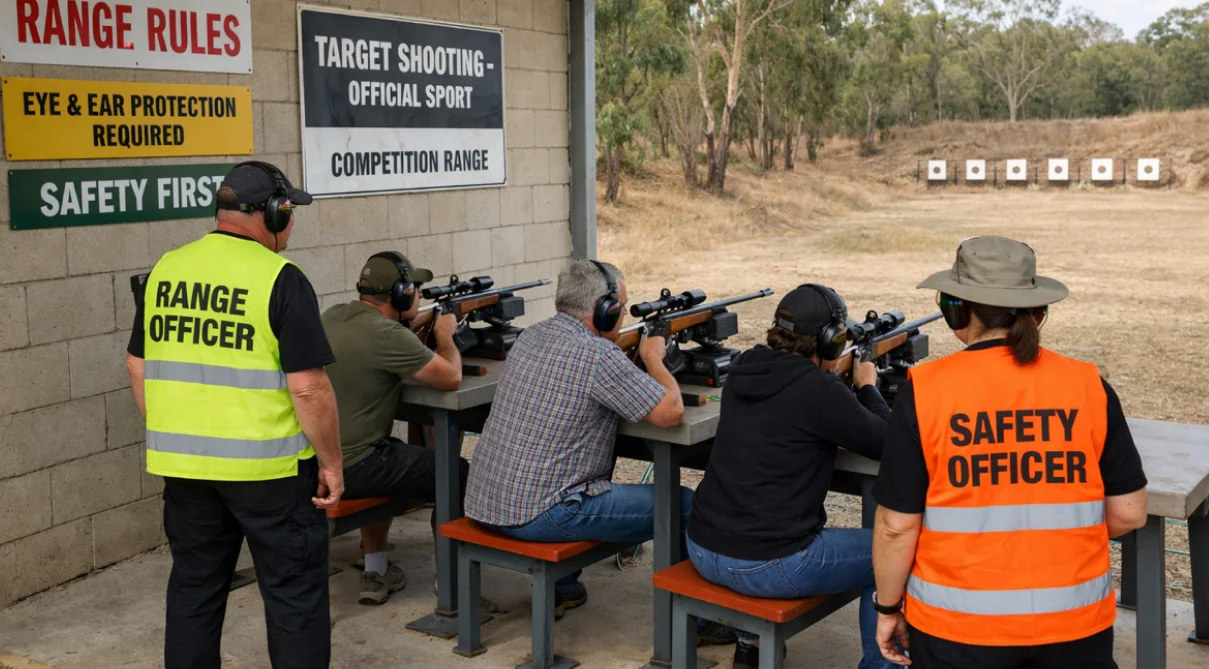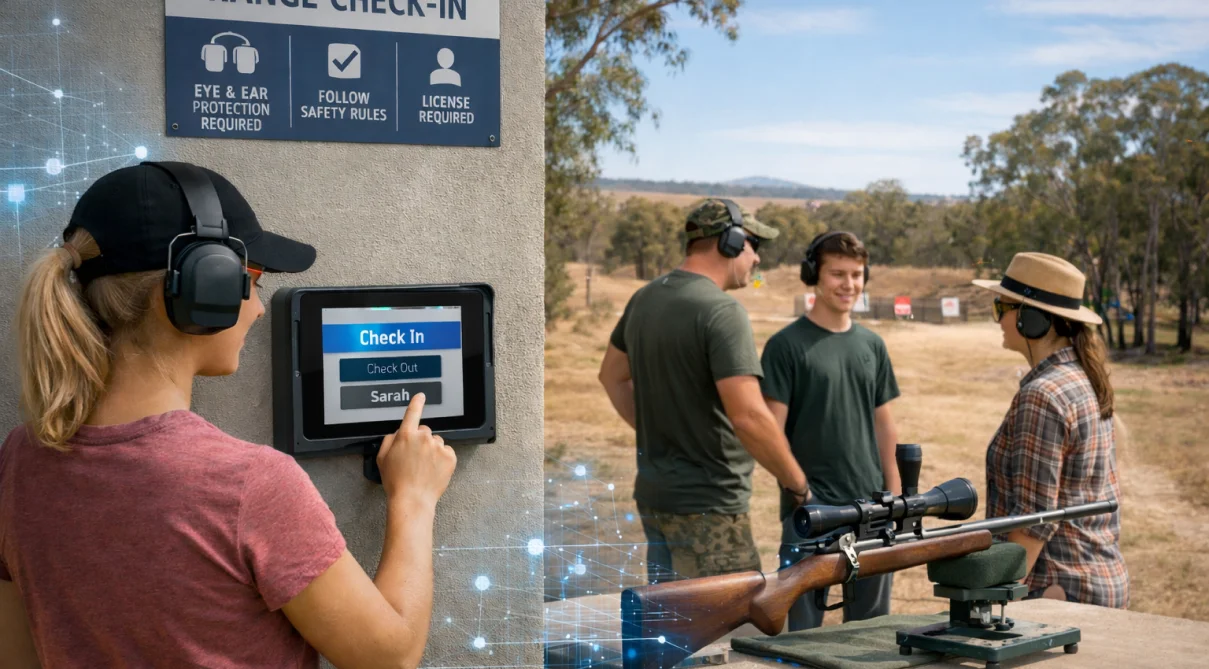How to Start a Pistol Shooting Club: A Comprehensive Guide
Starting a pistol shooting club is rewarding but complex, requiring careful planning and organisation.


Starting a pistol shooting club is a significant undertaking, but with careful planning and organization, it can be incredibly rewarding. Here’s a step-by-step guide to help you establish and manage a successful club.
1. Research and Planning
Understanding Local Laws and Regulations
The first and most crucial step in starting a pistol shooting club is understanding the local, state, and federal regulations that govern firearms and shooting ranges. These laws vary depending on your location and are vital to ensure your club operates legally and safely.
- Consult Local Authorities: Engage with local law enforcement or firearm regulatory bodies to understand specific requirements for establishing a shooting club, including zoning laws, firearm storage regulations, and safety standards.
- Permit and Licensing Requirements: Ensure you meet all the necessary licensing and permit requirements before proceeding. This may include operating permits for shooting ranges, handling firearms, and organizing shooting events.
Identifying a Suitable Location
Choosing the right location is critical to your club’s success. The site should be accessible to members, compliant with legal requirements, and suitable for various shooting activities.
- Indoor vs. Outdoor Ranges: Decide between an indoor or outdoor range based on your location, climate, and the type of shooting activities you plan to offer. Indoor ranges offer year-round access, while outdoor ranges may provide more space and flexibility.
- Safety Considerations: Ensure the location includes adequate safety measures like backstops, barriers, and signage to protect shooters and the surrounding community.
- Environmental Impact: Address the environmental impact, especially for outdoor ranges, including lead management, noise pollution, and waste disposal.
Developing a Business Plan
A solid business plan is essential for guiding your club’s operations and ensuring long-term success. This plan should outline your club’s mission, structure, target market, revenue streams, and operational goals.
- Mission and Vision: Define your club’s purpose, whether to promote competitive shooting, offer training, or provide a recreational outlet. Your mission will guide decision-making and help attract members.
- Revenue Streams: Identify potential income sources like membership fees, event fees, training programs, and merchandise sales. Consider offering tiered membership levels with different benefits.
- Financial Projections: Estimate startup costs, including range development, equipment purchases, insurance, and marketing. Also, project ongoing expenses and expected revenue to ensure the club’s sustainability.
2. Establishing Club Structure
Forming a Committee
A strong leadership team is crucial for managing your club’s operations effectively. Forming a committee of dedicated individuals will help you navigate the complexities of running a club.
- Roles and Responsibilities: Assign specific roles within the committee, such as President, Treasurer, Secretary, and Range Officer. Clearly define each role’s responsibilities to ensure smooth club management.
- Decision-Making Processes: Establish clear processes for decision-making, whether through voting, consensus, or delegation. Regular meetings will be vital for discussing club matters and addressing any issues that arise.
Creating Bylaws
Bylaws are the rules that govern your club’s operations, providing a framework for decision-making, membership management, and dispute resolution.
- Membership Requirements: Define criteria for joining your club, such as age, background checks, and adherence to safety protocols. Also, determine the process for admitting new members.
- Code of Conduct: Establish a code of conduct that outlines acceptable behavior and safety standards, ensuring a positive and safe environment for all members.
- Meeting and Voting Procedures: Specify how often meetings will be held, who can vote on club matters, and how votes will be conducted. Transparency in governance builds trust among members.
3. Securing Funding and Resources
Initial Funding
Starting a pistol shooting club requires a significant investment. Identifying funding sources is crucial to cover your startup costs.
- Membership Fees: Membership fees will likely be your primary revenue source. Develop a fee structure that balances affordability with the need to cover expenses.
- Fundraising and Donations: Organize fundraising events or seek donations from local businesses, shooting enthusiasts, or national organizations supporting shooting sports.
- Grants: Research available grants for shooting sports clubs. National shooting organizations, government bodies, or private foundations may offer financial support for new clubs.
Acquiring Equipment
Your club will need a variety of equipment to operate effectively. The type and quantity will depend on the shooting activities you offer.
- Firearms and Ammunition: Decide whether the club will provide firearms and ammunition or if members will need to bring their own. Ensure all firearms are properly stored and maintained.
- Targets and Range Equipment: Invest in high-quality targets, backstops, and other range equipment. Consider electronic scoring systems to enhance the shooting experience and streamline competitions.
- Safety Gear: Provide safety gear such as ear protection, eye protection, and first aid kits. Safety is paramount, and having the necessary gear readily available is essential.
4. Legal and Administrative Setup
Registering the Club
Formalizing your club as a legal entity is crucial for protecting personal assets and ensuring compliance with the law.
- Legal Structure: Choose an appropriate legal structure for your club, such as a non-profit organization, limited liability company (LLC), or corporation. Each structure has different implications for taxes, liability, and governance.
- Tax Identification: Obtain a tax identification number (TIN) from the relevant authorities. This will allow you to open a bank account, file taxes, and apply for grants.
Insurance and Liability
Operating a shooting club involves inherent risks. Obtaining comprehensive insurance coverage is essential to protect the club, its members, and its leadership.
- General Liability Insurance: Covers injuries or property damage that occur on club premises. This is a must-have for any shooting club.
- Firearms Insurance: Provides coverage for accidents involving firearms, including accidental discharge or damage to firearms.
- Event Insurance: If your club hosts events or competitions, consider additional coverage for these activities.
Setting Up a Membership Database
A well-organized membership database is vital for effective club management, allowing you to manage member information, track payments, and communicate with members efficiently.
- Member Information: Collect and store essential member information such as contact details, membership status, and attendance records. Ensure that this data is kept secure and private.
- Payment Tracking: Use the database to track membership payments, dues, and other financial transactions, simplifying financial management and reporting.
- Communication Tools: Integrate communication tools that allow you to send newsletters, event invitations, and other important updates to members.
5. Recruiting Members
Marketing and Outreach
Attracting members is essential for your club’s success. Effective marketing and outreach strategies will help you build a strong and engaged membership base.
- Social Media: Leverage social media platforms to promote your club, share news, and engage with potential members. Create a Facebook page, Instagram account, or YouTube channel to showcase your activities.
- Community Engagement: Participate in local events, gun shows, or community fairs to raise awareness about your club. Offer informational brochures or host demonstrations to attract interest.
- Partnerships: Partner with local businesses, shooting ranges, or national shooting organizations to expand your reach and gain credibility.
Offering Introductory Classes
Offering introductory classes or open days is one of the best ways to attract new members. This allows potential members to experience what your club offers in a low-pressure environment.
- Beginner-Friendly Programs: Design programs specifically for beginners, covering the basics of pistol shooting, safety protocols, and equipment handling. Ensure instructors are patient and knowledgeable.
- Open Days: Host open days where non-members can visit your range, meet existing members, and try shooting. Offer incentives for joining, such as discounted membership fees or free training sessions.
6. Developing Programs and Events
Training and Safety Courses
Ongoing training is essential for maintaining a high level of safety and skill among your members. Offering regular training courses will also help retain members and attract new ones.
- Basic Training: Provide basic training for new members, covering firearm safety, range rules, and shooting techniques.
- Advanced Training: Offer advanced courses for experienced shooters, such as tactical training, competitive shooting techniques, or firearms maintenance workshops.
- Certifications: Consider offering certification programs that recognize members who have completed specific training levels. This can also be a requirement for certain club privileges.
Competitions and Social Events
Competitions and social events are key to building a sense of community within your club. They also provide opportunities for members to hone their skills and showcase their abilities.
- Internal Competitions: Organize regular competitions within the club, such as monthly shooting matches or skill challenges. These events can be friendly and casual or more formal with prizes and recognition.
- Inter-Club Competitions: Participate in or host competitions with other shooting clubs. This can help build your club’s reputation and provide members with broader exposure to the sport.
- Social Gatherings: Host social events such as BBQs, dinners, or range clean-up days. These events help strengthen the bond between members and create a supportive community.
7. Ongoing Management
Regular Meetings
Regular meetings are essential for keeping your club organized and ensuring that all members are informed and involved in decision-making.
- Committee Meetings: Hold committee meetings to discuss club management, plan events, and address any issues. These meetings should be scheduled regularly to ensure ongoing communication and transparency.
- Member Meetings: Host regular meetings for all members to discuss club activities, provide updates, and gather feedback. This fosters a sense of inclusion and encourages active participation.
- Annual General Meetings (AGMs): An AGM is crucial for reviewing the club's progress, electing new committee members, and making important decisions about the
Conclusion
Starting a pistol shooting club is a rewarding endeavor that requires careful planning, organization, and ongoing management. From understanding local laws and securing funding to developing training programs and fostering community, each step is crucial for creating a successful and sustainable club. By following the guidelines outlined in this guide, you can build a strong foundation for your club, ensuring it thrives and serves its members effectively. With the right approach, your club can become a vibrant community hub for pistol shooting enthusiasts, providing opportunities for learning, competition, and camaraderie.
How Squadspot Can Simplify Setting Up a Pistol Shooting Club
Starting a pistol shooting club involves many moving parts, but Squadspot can make the process significantly easier by streamlining key aspects of club management. Here’s how Squadspot can help:
Benefits of Using Squadspot:
- Centralized Member Management: Easily manage member information, renewals, and communications in one platform.
- Event and Training Management: Organize and track events, training sessions, and competitions with integrated tools.
- Automated Reporting: Simplify administrative tasks with automated reporting and data tracking.
- Secure Data Handling: Ensure all member data is securely stored and accessible only to authorized personnel.
- Scalable Solutions: Grow your club effortlessly with tools designed to handle increasing membership and complex organizational needs.
By integrating Squadspot into your club’s setup, you can focus on building a strong community and delivering a great experience for your members, leaving the administrative tasks to a reliable, comprehensive platform.




